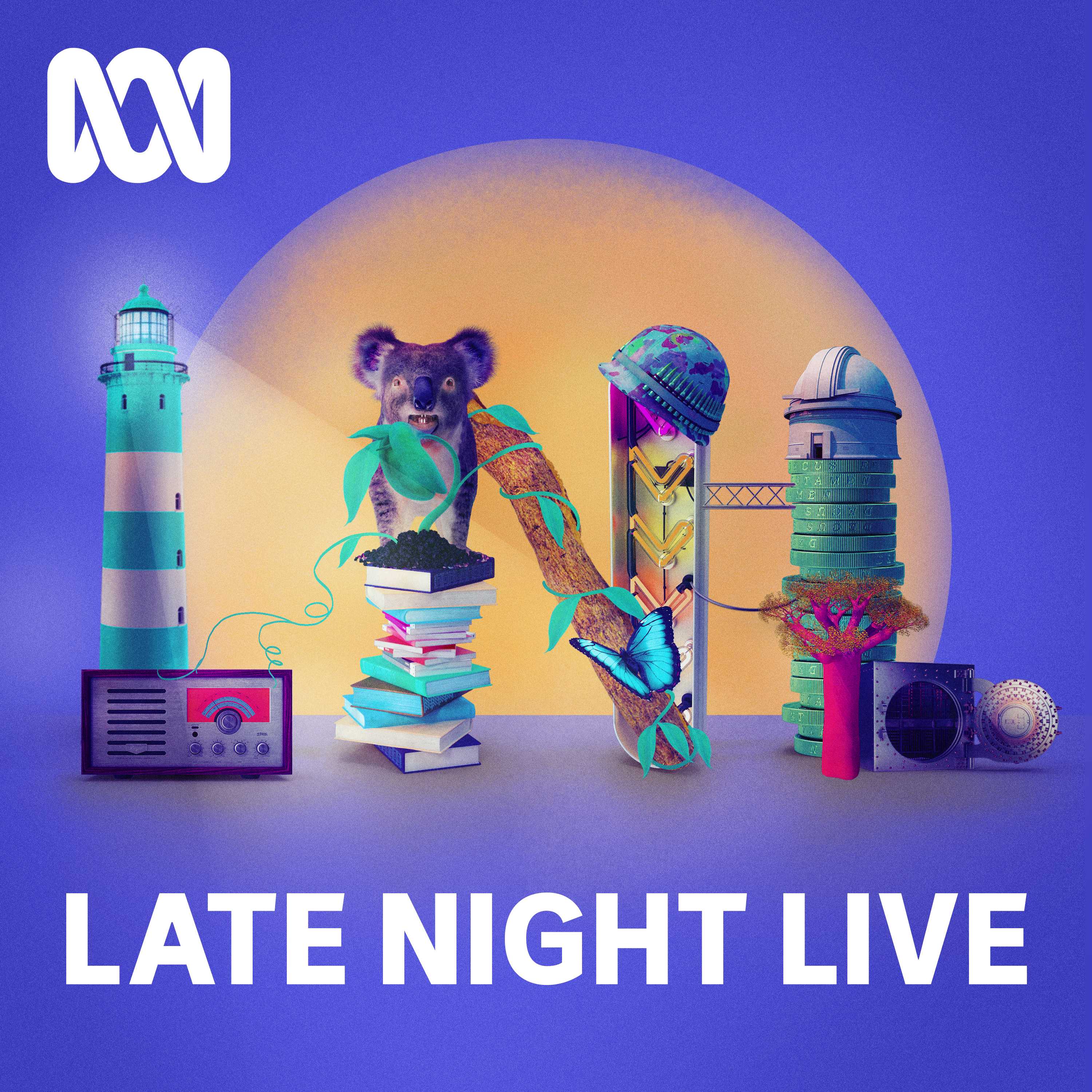
The RegenNarration
The RegenNarration podcast features the stories of a generation that is changing the story, enabling the regeneration of life on this planet. It’s ad-free, freely available and entirely listener-supported. You'll hear from high profile and grass-roots leaders from around Australia and the world, on how they're changing the stories we live by, and the systems we create in their mold. Along with often very personal tales of how they themselves are changing, in the places they call home. With Prime-Ministerial award-winning host, Anthony James.
The RegenNarration
227. Hemp is the New Buffalo: On the new Patagonia film out today, with director Joel Caldwell
‘The biggest strides in hemp-crete construction are going down on one of the smallest reservations in America.’ That’s how the bill reads on Patagonia Film’s latest production, The Green Buffalo, launching online globally today. It’s referring to the Lower Sioux Indian Community, on the southern bank of the Minnesota River about 100 miles SW of Minneapolis. Turns out we had driven close by after leaving Kelsey Scott’s place on the Cheyenne River Sioux Reservation in South Dakota, where we recorded episode 222. But it took getting to Charleston, South Carolina, to meet filmmaker Joel Caldwell, and learn of this ‘against all odds’ redemptive story – one that holds so much promise for the Lower Sioux, and the rest of us.
Joel is a photographer and writer hailing from rural Washington State. Having turned his hand to film making, he found himself transformed by five years following stories of regeneration, together with wife and project partner Hailey Wist. Then come 2024, he was blown away all over again by this story. It’s ended up becoming Joel’s first production with Patagonia, and as you’ll hear, has an incredibly poignant moment for me personally too.
This episode has chapter markers and a transcript (available on most apps now too). The transcript is AI generated and imperfect, but hopefully provides greater access for those who need or like to read.
Recorded 30 September 2024 (intro recorded in Baltimore).
Title slide: Danny Desjarlais, from the film (supplied).
See more photos on the website, and for more from behind the scenes, become a subscribing member via the links below.
Music:
Green Shoots, by The Nomadics.
Regeneration, by Amelia Barden, from Regenerating Australia.
The RegenNarration playlist, music chosen by guests (thanks to Josie Symons).
Find more:
Trailer & how to host a screening of The Green Buffalo.
Joel on Substack.
Premiere live screening of The Green Buffalo is this Friday 25 October, in Charleston, followed by discussion with Danny Desjarlais from the Lower Sioux, alongside Joel, and April Magill from the local Root Down Building Collective. All welcome.
The RegenNarration is independent, ad-free and freely available, thanks to the generous support of listeners like you.
Please consider becoming a paid subscriber to help keep the show on the road - and gain access to a great community and some exclusive benefits - on Patreon or Substack (where you'll find my writing).
You can also donate directly via the website (avoiding fees) or PayPal.
I hope to see you at an event, and even The RegenNarration shop. And thanks for sharing with friends!
And so we need to have hemp processing plants all over the place. We need to empower the local farmers. You know we need to be growing hemp, processing it and using it locally. That's the idea and that's what's really exciting. And so the first people in North America, sort of against all odds, the first people in North America who are growing their own hemp, processing it into usable fiber themselves and then using it to build homes for their own community, is the Lower Sioux Indian community on the plains of Minnesota.
AJ:G'day Anthony James here for The RegenNarration ad-free, freely available and entirely supported by listeners like you. So thanks a lot Justin Von Perger and Luke Sweet from back home in Oz, and Kersti Wagstaff from over in the UK, for being subscribing members of the podcast for over two years now. Having jumped on board within 24 hours of each other back then. Made me wonder what episode went out then, and would you believe it was an episode I was just telling people about here last night? T he incredible episode 125, Beyond Title Fight with brilliant journo and fellow subscriber Paul Cleary. Anyway, huge thanks for keeping this independent podcast going. If you're enjoying it too, you can join Justin, Luke, Kersti and Paul, part of a great community of supporting listeners by just heading to the website via the show notes regennarration. com forward slash support. Thanks again.
AJ:The biggest strides in hemp- crete construction are going down on one of the smallest reservations in America. That's how the bill reads on Patagonia Film's latest production, The Green Buffalo, launching online globally today. It's referring to the Lower Sioux Indian Community on the southern bank of the Minnesota River, about 100 miles southwest of Minneapolis. Turns out we'd driven close by after leaving Kelsey Scott's place on the Cheyenne River Sioux Reservation in South Dakota, where we recorded episode 222. But it took getting to Charleston, South Carolina, to meet filmmaker Joel Caldwell and learn of this, against all odds, redemptive story, one that holds so much promise for the Lower Sioux and the rest of us.
AJ:Joel is a brilliant photographer and writer who grew up in rural Washington state. Having turned his hand to filmmaking, he found himself transformed by five years following stories of regeneration, together with wife and project partner Hailey Wist. I know sounds familiar, doesn't it? Then, come 2024, he was blown away all over again by this story. It's ended up becoming Joel's first production with Patagonia and, as you'll hear, has an incredibly poignant moment for me personally too. G'day Joel.
Joel:Hey, how you doing.
AJ:It's great to be with you, mate, on your front porch here looking over your wonderful native garden, which I've taken a picture of, so I'll slot that in for listeners. But I'd love to hear the nub of how this film came about.
Joel:Yeah, without getting too much in the weeds. You know, I, as a environmental journalist and kind of just following the spark of one and where it leads to the next, and just, uh, you know, during COVID, during, during the Trump administration, during some pretty unsettling times, you know, especially here in the United States. Maybe, you know, globally, um, I have been immersed in this, just these incredible stories from all over the world of people healing their local ecosystems in a variety of ways, and it's been really, you know, it's really changed my outlook on the world. And that spark led me, after, you know, maybe three, four or five years of mostly looking at kind of ecosystem restoration as something that individuals can do to support biodiversity, to live happier, more complete, more joyful lives and then also, you know, curb the worst effects of climate change. You know, uh, it led me to, interestingly, to a hemp Crete building workshop here in Charleston, south Carolina, which is now my home. Um, and uh, a local architect who is, is really opened my eyes to this potential of, instead of building the way we have built houses really since world war two, at least in this part of the world, which is, you know, taking these really energy intensive materials that are ripped out of nature, pouring a huge amount of energy and chemicals into them, and then building houses that are semi well performing not really that well performing but embody a huge amount of carbon.
Joel:You know the potential to shift to using plant-based building materials, using materials that are grown so the energy comes from the sun. For example, in the subtropical environment, subtropical climate here in South Carolina, you can grow two crops of hemp a year. So in 90 days it grows, it explodes from a seed the size of a coffee bean to maybe 15 feet in height, well overhead, um, and you can, basically you know pimp has a ton of uses, but you can you can take the stem of the hemp plant and um process it into this, into the fiber basically, and you can mix it with lime and water and you can put it in a stud wall and it's pest resistant, it doesn't burn and it keeps all of that carbon in the walls of your house. And so you can, we can, build houses that are carbon banks and higher performing, and so that's.
Joel:You know, the building sector in this country, and I believe the world is the third largest emitter, globally, I think and so there's an opportunity to go from also building materials, which you're just probably heard in the background here fill up, fill up 45 of our landfills and, as you've probably seen touring around this, this country, there's a lot of trash generated here and so 45 of that is building materials. So if, instead, we build our walls out of things that you know, if you knock them down, they'll just eventually go back to the earth, I mean, it would just be such a game changer so that. So that's a long-winded I apologize way of of telling you how I got on this film I'm here for the story, right.
AJ:It's amazing to hear that because you know, I've heard a bit about hemp over my own journey and I don't think we've done anything specifically on it on the podcast to date. But it's interesting watching your film Because what hits me most in a way, takes that and transcends it by some margin, because where you landed was with the First Nations community. Tell us a bit about why that happened. And then, yeah, where the film followed the First Nations community, tell us a bit about why that happened and then, yeah, where the film followed the story Right.
Joel:So hemp, you know, one of the exciting things about hemp and hempcrete and hemp building materials or natural building materials, is the opportunity to recreate these circular economies, these localized economies. You know, I think something like three acres of hemp fills a tractor trailer. There's just so much biomass, and so if you're shipping that very far, it's not sustainable anymore and it's not cost effective. And so we need to have hemp processing plants all over the place. We need to empower the local farmers. We need to be growing hemp, processing it and using it locally. That's the idea and that's what's really exciting. And so the first people in North America sort of against all odds, the first people in North America who are growing their own hemp, processing it into usable fiber themselves and then using it to build homes for their own community, is the Lower Sioux Indian community on the plains of Minnesota, and this is a group that used to have 29 million acres, basically three large U S States that they followed the Buffalo on Um, and they were, you know, the historic caretakers of the environment. Right Then they settlers showed up and they were some of the heaviest persecuted American tribes. I would say they were subjected to the largest mass execution in US history. They were completely banished from Minnesota, all their treaties were revoked. They were being starved anyway, the treaties weren't being upheld, and now they live on three square miles with basically a casino and nothing else.
Joel:And you can imagine I'm from a place of rural poverty and lots of hardship. But I haven't had a boot. My people, my culture, hasn't had a boot on its neck for 170 years, right, and so the magnitude of what that does uh to a group of people is, you know, pretty shocking. So, against all odds, they have a housing crisis and their solution that they go for is is is not only to grow hemp, which they have basically no history of farming, you know, they follow the Buffalo but they plant, grow their own hemp and then they get into processing, processing it, they invest in processing uh equipment in a facility and then they learn to build with it. Um and it. It's just an. It's just a truly incredible story that, backed against the ropes like that, you would invest in this long-term solution that again puts you in a position to be a caretaker of the environment. It's just, it's it just. It gives me goosebumps, and I've been working on this story for eight months it is incredible.
AJ:There I was telling you within a 20 minute film, I felt there were several mic drop moments, and that's even someone who's sort of broadly in the tent of a lot of these themes and has come across the country through these areas, obviously spent time on the cheyenne river, sioux reservation and saw some of the resurgence happening there too. But this story in its own right incredible, and the people then that shared the story with you. There was an amazing moment where your key protagonist, which I'll let you introduce, said hemp is the new buffalo. With regards to what the buffalo was in the past. To hear that from him is so profound and it's it speaks to some of what you've just introduced for us, but from him, and in that way so profound. And there was another character there that really hit me. And then it turns out you too, hey, and I'll let you introduce her as well, and how that played out.
Joel:Right, yeah, so the protagonist is Danny Desjarlais and he's about my age, he's in his late 30s and he is the builder. He is the guy that he was a contractor beforehand before getting into hemp and then he was told by an elder Earl Pendleton guided him towards hemp and hemp construction and his eyes were opened and it really. He speaks really eloquently in the film about how a lot of people and I think generally everywhere, but also a lot of you know, a lot of Native Americans, a lot of people that have been subjugated to life on a reservation, you know they need a why, they need purpose, right, and so he has found purpose in building these better quality, cleaner, healthier homes for his community members that desperately need it, and that has been, you know, and Grace Goldtooth, who's the other character that you mentioned, who kind of functions as a social worker, I think, and works with children and, you know, teaches people the Dakota language and is very connected and in touch spiritually in a way that you know not everyone is, I think, in this day.
Joel:Um, she's really the heart, I think she's the heart of the, of the film.
Joel:You know, she, she, she speaks about that as well, about how, you know, the community needs a, why it needs purpose, and and traditionally people thought about seven generations forward and what you do today and how that's going to provide.
Joel:And so Danny makes this comparison to the buffalo that his people used to follow and that hemp can be that. You know, hemp can be food, it can be medicine, it can be homes, it can be clothing, it can revitalize soil. You know the three miles that they live on, three square miles, is the sandiest, worst soil, surrounded by the best. You know the two counties next to them, I think, often lead the country in soybean and corn production. You know it's like the best, some of the best soil in North America, but not where they are, they're on a sandy hilltop so, but hemp can grow there, you know, and so they're not going to be allowed to roam and follow the herds of buffalo that are no longer there, you know, and so they're not going to be allowed to roam and follow the herds of buffalo that are no longer there, obviously. So hemp can kind of embody that within the confines of their life today.
AJ:It's extraordinary and, yeah, they both had such presence. It really spoke to the purpose, channeling through them. There were also a number of key outcomes that were mind-blowing to think, including some changes in policy at formal levels, but what really struck you? That's shifting on the ground.
Joel:Yeah, I mean, I guess, if you look at the broader country, you know hemp has been illegal, you know, since prohibition, so I think early 1900s, maybe 19s, maybe 19 teens, I'm not exactly sure when that happened.
Joel:Hemp got caught up with its cousin marijuana, you know, in reefer madness and and this idea that it was ruining people's lives or or whatever it was, and so it wasn't until the 2018 farm bill that you could even grow hemp and, and it was complicated then you'd still get raided by the drug enforcement agency and you still have to have special permits when you want to grow it and when you want to row hemp and and it was complicated then you'd still get raided by the drug enforcement agency and you still have to have special permits when you want to grow it and when you want to harvest it.
Joel:But the tribes because they're sovereign, you know, on their, on their reservations they could actually start growing it ahead of time and they could get a little bit of a jump start, and I think it appeals to a lot, of, a lot of that you know, culturally, not to speak broadly about, about native americans, but, um, there's a lot of interest, you know, and so not to speak broadly about, about Native Americans, but, um, there's a lot of interest, you know, and so the fact that not only is it legal to grow hemp again and there's a lot of interest, but it's also the U S building codes, residential building codes has endorsed hemp as a legitimate way of building, of building homes.
Joel:You know, um, and and that's important because we're in a time when we're trying to slash our emissions, we have climate goals, but we also have a ballooning population, we continue to and massive affordable housing crisis all across the country. So how do we build more homes if it's the third largest emission in the country and house people who desperately need it while simultaneously cutting our emissions? And that we have to adopt these biogenic building materials, that the energy comes from the sun and make our homes carbon banks and literally build our way towards a brighter future I'm interested in, for you, the process of making the film.
AJ:It's been the lion's share of this year, not working only on this. Of course, you've been working on other films too, which we'll look forward to talking about another day, but this one's been since the start of the year. How does it play out? How do you end up involved and find the relationships building, and what ended up becoming of this one such a key passion?
Joel:project.
Joel:So my process is, me, is is I'm first and foremost probably a writer and a photographer, I guess you know, um, and so the opportunity, you know I did a lot of research. There was a, there was an article that had been published about them already, so I was able to read that, you know, and kind of get some high level and and and and figure out who I needed to talk to, made some primary calls, and then I was able to go to the, to the community and and meet people and kind of photograph it and and you know, just generally do my research, you know, and kind of figure out where the story is, you know, and and then, yeah, we just we had a really small nimble crew the most, you know, we only had myself and two other people at any time and so we're able to be very nimble and kind of, you know, figure out what's happening each day and how we can make the best out of our time. The tribe put us up at the casino. We were able to have a free place to stay, which we kept the budget low, you know, it's just it's it's.
Joel:You know, making a film is is such a journey because it's it's, there's just so many factors that play into it, everything from weather to personal relationships, to tribal politics, to you know, there's just there's just an enormous amount that goes into, so, you know, to making something, even just finishing something, I think you know, and so, yeah, just kind of putting yourself in the position to make the best film you can, and I've been really fortunate to collaborate with some super talented people, which is the only way I'm ever going to make a film, that's any good.
Joel:And the Patagonia partnership. How did that arise? Yeah, so Patagonia had actually purchased a hemp story from me here in the southeast. I live in charleston, south carolina, and there's a really great story that's still kind of evolving here. Um, because of the opportunity to grow hemp and and and um, you know, this used to be a massive um.
Joel:Southeast used to be where all of the clothing came from, at least for our country. Right, and and. All that went overseas, and so I bankrupt a lot of these small towns. So to shift from cotton, which depletes soil in no time, to shift that to hemp, which is a nitrogen fixer and can regenerate soil, and then build all these processing facilities. That's jobs for people.
Joel:And then, you know, historically disenfranchised African-American farmers who have the U S department of agriculture has um prevented from having the same access as white farmers to, you know, grants and loans and funding Um, so their portion of the pie has shrunk and shrunk and shrunk.
Joel:There's way less farm African-American farmers than there used to be. So to give them an opportunity, a reboot, to like, grow this, grow this crop that can be used in. You know, here in South Carolina we make they make a lot of cars and you can make bioplastics out of hemp. That can be, you know, instead of petroleum based based plastics on that that are the plastic inside of your car, you know, on your doors et cetera. You know that could all be a hemp based, you know material, and so really the potential is is kind of endless. So I might be getting in the weeds here, but I was trying to tell that story for a long time here and the processing facility just kept failing to open, and so then we heard about what was happening in the lower Sioux and it's just such an incredible story, so off we went.
AJ:It is such an incredible story and the film doubled in length, I believe, as it.
AJ:The story became apparent and that process I mean this is what we hear even with other aspects of agriculture that are coming back and being reclaimed in many instances is that it is that processing piece that has been globalized out if I just use that terminology in a flippant way, and of course that goes back, as he said, to a disenfranchisement.
AJ:As we sit here in South Carolina, we've been talking a lot about the Civil War in the 1860s and the context of one of those mic drop moments in your film.
AJ:Frankly, that I don't want to spoil for listeners, but around some of the contradictions at play with emancipation from slavery, yet some of the contradictions at play with emancipation from slavery, yet some of the worst things that native americans confronted at the time, and particularly the people you're talking about, and to think that this, in a way, is such a a flash point for some of this stuff. It's got its own context in multiple layers that come into it. It's fascinating to be here talking with you who ends up making a film on this level, and it packs such a punch. I also had to mention the music you've weaved in, which is a real feature, starting with their music on site together, and then, amazingly, I hear a piece of music that's been so central to my life for 30 years that the band I was in was touring to the soundtrack of back then in Australia, and here it is appearing in your film, sacred Spirit. How did that happen?
Joel:Yeah, you know, music is so essential, right to this, really to the crew, the crew that builds the Hempcrete Homes on the res, and you know they listen. They listen to traditional music, absolutely, but they also listen to a lot of hip hop. You know they listen to a lot of. You know, I think again, not to, I'm not an expert and I don't mean to generalize, but I think my experience within the community is that they have a lot in common with with other cultures of oppression, you know, inner city cultures that have not had access to you know what, what others of us had, you know, and so, like hip-hop hits hard, just like it hits anywhere all over the world. It's global phenomenon, you know, and so we weave together traditional music.
Joel:There's a community member, joe Erler, who's a really talented singer and drummer, and he, he kind of leads this. You know we, we were fortunate that they were performing, uh, while we were there, um and, and so we, we combined that and like that drumming, that drum beat is definitely a through line with with beats, you know, with the beats that the crew listens to, and the sacred spirit. You know, that was really just, it's just such a gorgeous piece of music and that's when we're going through the history of the Lower Sioux, you know, since the 1860s, since the Dakota War, since you know, kind of setting the context of how, against all odds, it is that this group of people has done what they've done. You know, and yeah, it just felt, it just clicked. You know the editor that I was working with, jackie Weavers, she found that piece of music and it just was, it was just perfect. I hadn't heard it before but yeah, I love that you have this personal connection with it.
AJ:It's incredible to think we should meet now yet have this thread. Let's wind up with the local connection you started with, then April, who you introduced me to the other day at a build here which is the first one of its kind in this town. Hey, she's got something pretty special going on.
Joel:Yeah, so April McGill is a local architect and she is just a wonderful person. She's a community builder. She just brings together this incredible coalition of people you know from all walks of life and, and um, she is interested in climate, smart, affordable housing. Uh, exactly what I mean by I'm regurgitating things that I've learned from her. When I say we have a, we have a housing crisis and we're trying to cut emissions, how do we do it? I mean, this is like straight from her, but she's incredible because she is.
Joel:She's designing these affordable houses that, instead of what we've often done in the past, which are affordable, houses are poorly made, they're full of black mold and people just have to live in them. Instead, we can build. We can build them out of better materials, bio-based materials, and she, her designs are open source and anybody you know anybody can use them. You know she's not interested in making as much money as possible. She's interested in getting people in healthy homes. Uh, and I just have so much respect for that, and so currently she is building um, there might be one other hempcrete house that has been constructed in this area, but she's building the first.
Joel:She's building her nonprofit, the Root Down Building Collective, their office and in order to build it with Hempcrete and all of these other incredible, incredibly sustainable materials, she had to get that through the Charleston County Building Codes, which is, if you've ever tried to build anything, even just getting things, you know, getting your certificates to build. Imagine using a new material that people have never heard of. You know that's not an easy thing to do, but she has. She has done that. She's gotten that through. So if anybody else, if I want to retrofit my garage, which I'm interested in, with hempcrete, I can do it and it's going to be, you know, a fraction of the difficulty that she had to endure. So it's really, she's just amazing. Look her up.
AJ:Speaking of amazing women, there's another one who's on the credits, which is your wife, Hayley. Let's give due credit there. I'd love to hear a little bit about how the backdrop of the work you guys have shared together over a bunch of years has led to this particular moment as well.
Joel:Yeah, I mean Haley and I have collaborated on a lot of stuff. I mean basically everything that I write has she's looked through. She's a really talented writer, filmmaker, photographer, editor. She's just, she's just whip smart. Smart, you know, and very generous with her time and and um.
Joel:We worked together on for approaching five years to create, you know, an episodic show that was going to revolve around three, four, five characters in far-flung places all around the world who, for a variety of reasons, were restoring their, their local ecosystems. You know, it was an Amazonian shaman and Ashininkan political and spiritual leader. There was a Bollywood composer that uses his money to piece together an important wildlife corridor in the Himalayas. There was a safari operator who, in order to create the first safari company and basically the premier place in the world to see leopards, he had to restore an overgrazed and defunct cattle ranch. A Dayak indigenous woman in Borneo who grew up in, you know, in a traditional village that has been overrun by illegal gold mining and palm oil, and she has just seen a shocking transformation in her life. Who is? Who is, you know, founding a? Uh, an agroforestry and reforestation, um, nonprofit? I mean just just these incredible stories of resilience, but also these stories of nature's resilience. I mean the fact that if you partner with nature, if you give it half a chance, if we quit strangling it at every turn, you know our lives these, these people, embody. Uh, how much better our life is if we partner with nature and if we wake up. You know it's not all about sacrifice, it's not all about what you can't do right. It's about actually living richer, fuller, more joyful lives.
Joel:And so we we were on this journey, researching, you know, over a hundred restoration projects, projects probably around the world, to find the most charismatic people who could potentially entertain mainstream audiences.
Joel:And we got the Pippa Ehrlich, the director of my Octopus Teacher, signed on. We got an Academy Award winning producer from Pixar. We got boardwalk pictures that revolutionized doc storytelling with Chef's Table, you know, a decade or more ago. And we had this powerhouse team and we put together this amazing deck and we shot a pilot and we shopped it to Netflix, apple, peacock, eventually Nat Geo, which we got as far as budget negotiations before Disney put them on a buying freeze and did a big restructuring. I mean, it was just this long, slow process of people expressing interest and love for the idea and then not buying it At times when Hollywood was on fire and the flames were licking at the office building that's maybe a bit of an exaggeration, but, like you know and still just weren't able to get people to take a chance on an incredibly creative and outside the box idea that you know, obviously we were very passionate and very biased about. But it was an incredible experience.
AJ:It was painful, it was all of the above and we're sort of licking our wounds but that that dream still lives on in some iteration and hayley was the driver of that, absolutely yeah, well, that's very apparent to see a, having walked through the deck with you, how incredible the project is and how incredible those stories are that clearly bear telling, and having seen the patagonia film, let alone some of your other shorts in development, that you guys together are a powerful team to bring these things to bear. So when you talk about it in past tense, I somehow don't believe it and of course, for now either way, what's incontrovertible is it's playing out in what you're producing and what will premiere on October 23rd. So we'll put links out as that launches and mate to go out. We circle back to music, because I'd like to hear from you what piece of music has been significant in your life?
Joel:Wow, I mean, I have had the Lower Suwannee community's traditional music pounding through my veins for months now, which has been really, which has been really powerful. Um, and then one, one piece of music that I Haley and I both always come back to, that we didn't discover until, you know, way late, but is a Paul Simon song called hearts and bones. Um, and we, yeah, that's just my opinion One of the most beautiful songs I've ever heard. But yeah, I guess that would be. You know, you've caught me in this moment and that's what's coming out of my mouth but, it could be something else.
AJ:No, I hear you and at some stage we'll get Hailey on with you and we'll talk this broader project, cause there's a bigger story with you guys that bears telling too. So for now, mate, thanks a lot. Thank you so much. Amazing to be with you, appreciate it. Thanks, aj.
AJ:That was joel caldwell, director and co-producer of the green buffalo streaming on patagonia Films from today links in the show notes and a few photos on the website, with more for subscribing members in great thanks for making this episode possible. You can join us by heading to the website or the show notes and following the prompts. Thanks, too, for sharing the podcast - and the film. Danny Desjarlais will be present at the world premiere live event screening in Charleston, south Carolina, this Friday night, 25th of October, alongside Joel and April McGill from the local Root Down Building Collective and, no doubt, Hailey too. All are welcome and we'll be with you in spirit, with thanks to mutual friend, former podcast guest and brilliant author, judith Schwartz, for introducing us to Joel and his family. The music you're hearing is Regeneration by Amelia Barden and, at the top, green Shoots by the Nomadics. My name's Anthony James. Thanks for listening.
Podcasts we love
Check out these other fine podcasts recommended by us, not an algorithm.

Team Human
Douglas Rushkoff
7am
Solstice Media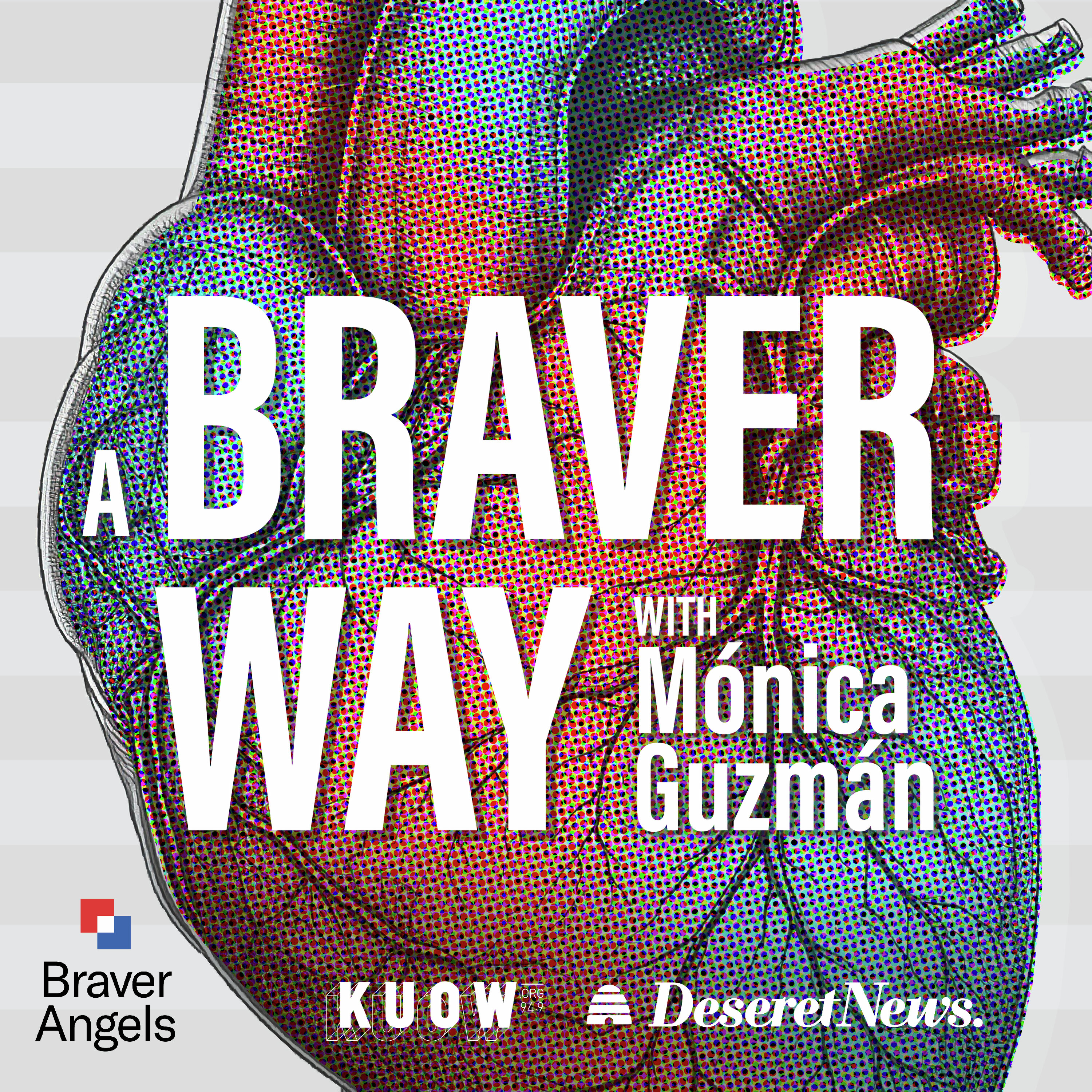
A Braver Way
Monica Guzman
On the Media
WNYC Studios
Aboriginal Way
Aboriginal Way
All In The Mind
ABC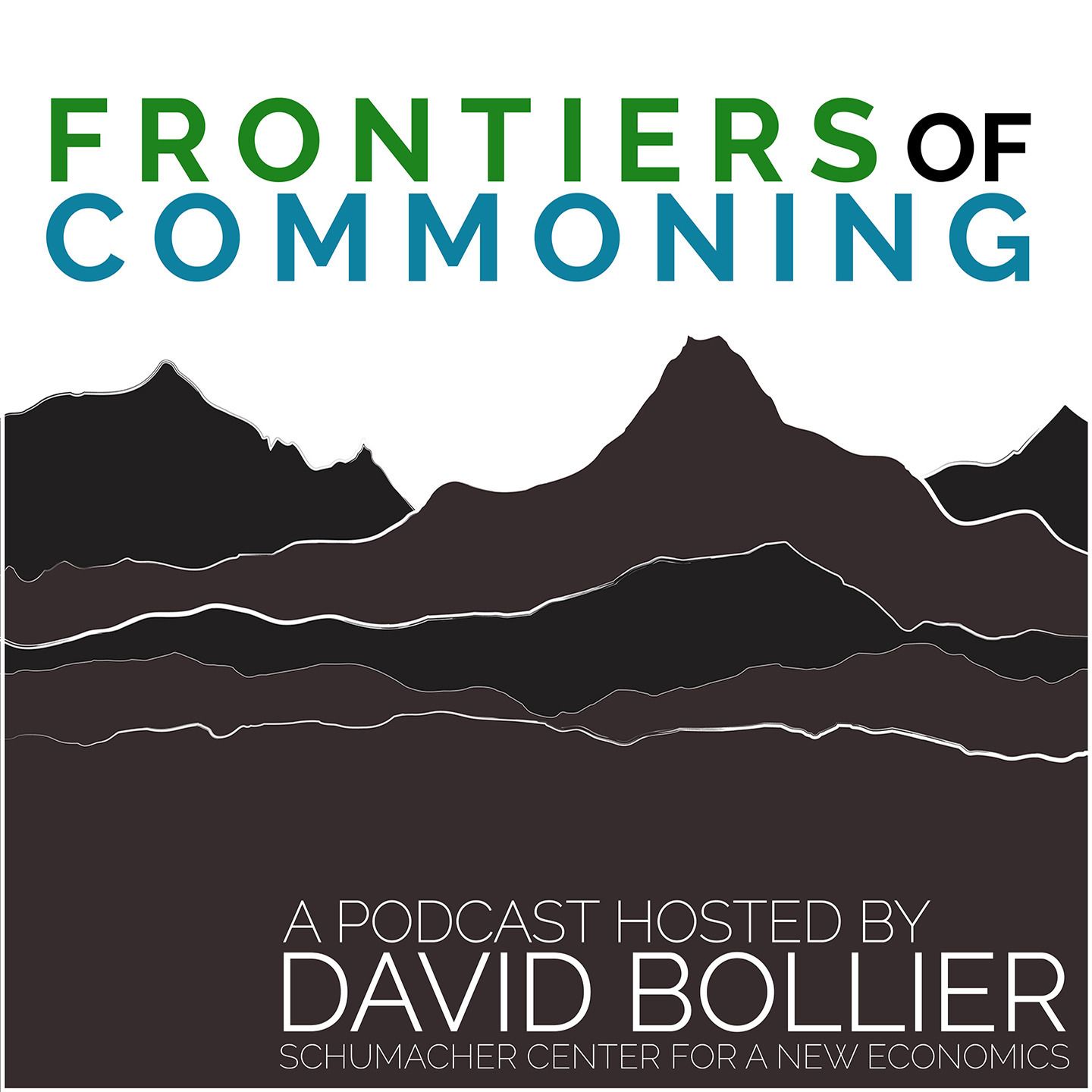
Frontiers of Commoning, with David Bollier
The Schumacher Center for a New Economics, David Bollier
Futuresteading
Jade Miles
The Lindisfarne Tapes
The Schumacher Center for a New Economics
Buzzcast
Buzzsprout
Freakonomics Radio
Freakonomics Radio + Stitcher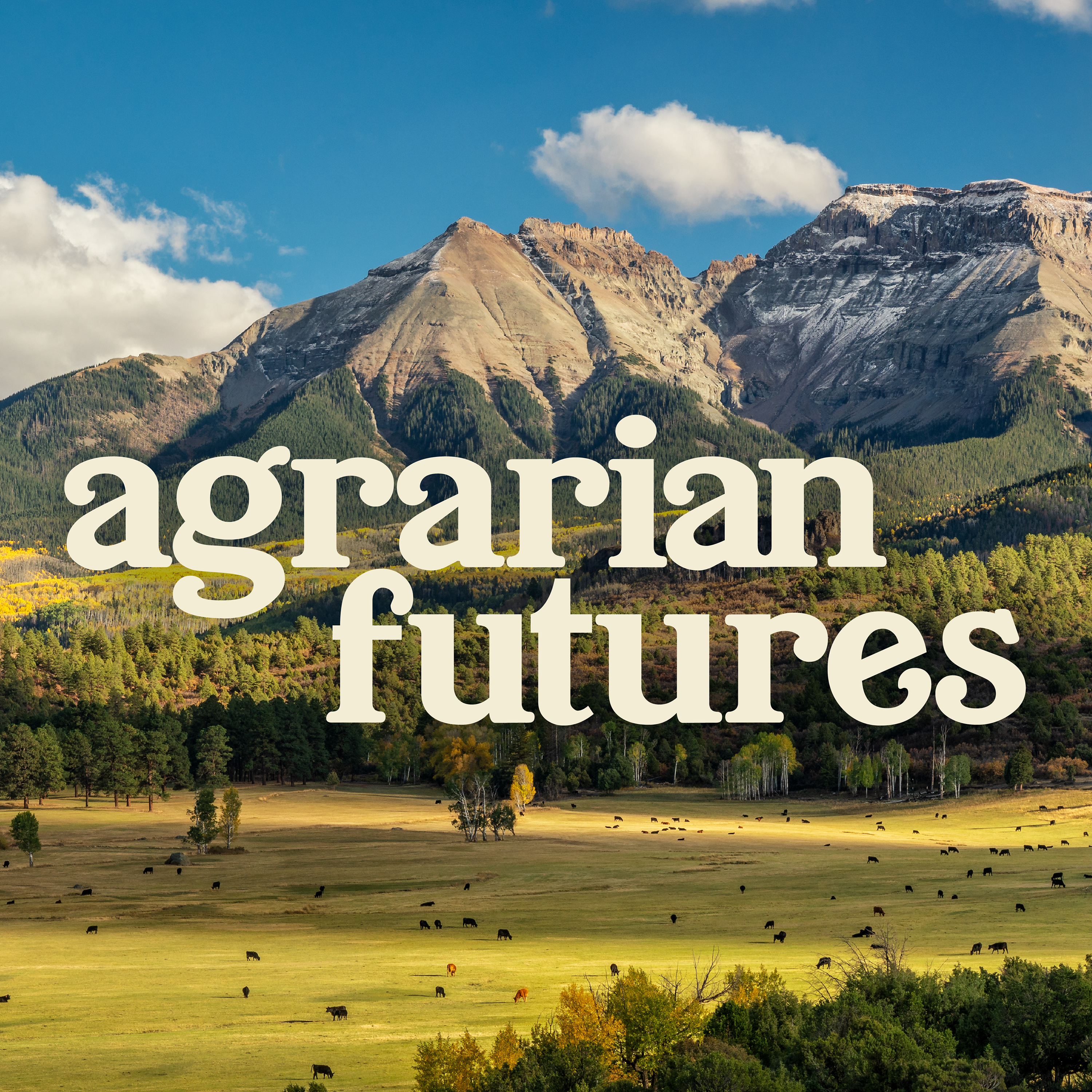
Agrarian Futures
Agrarian Futures
Mountain & Prairie with Ed Roberson
Ed Roberson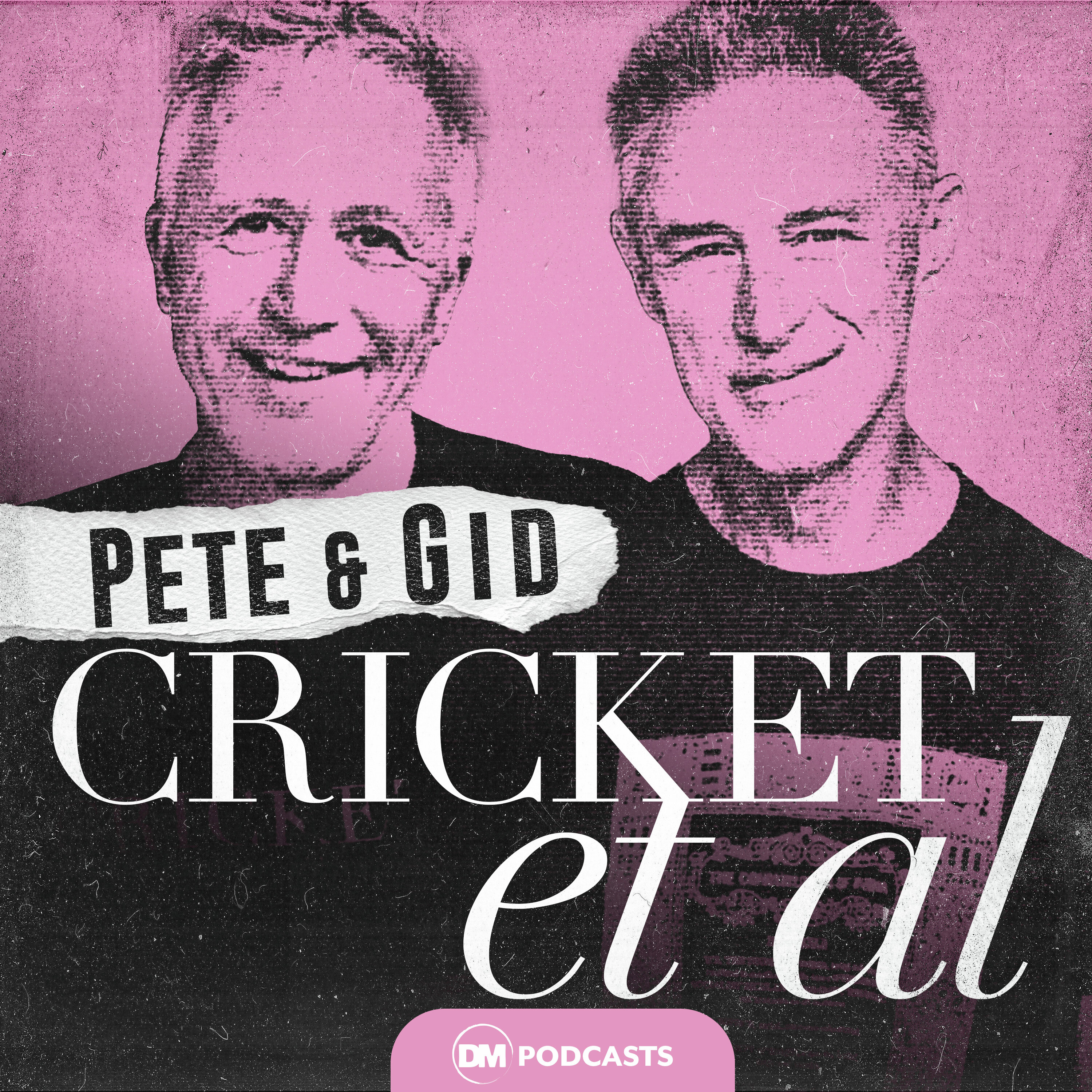
Cricket Et Al
Cricket Et Al
Broken Ground
Southern Environmental Law Center
Lost Prophets
Elias Crim & Pete DavisConversations
ABC

